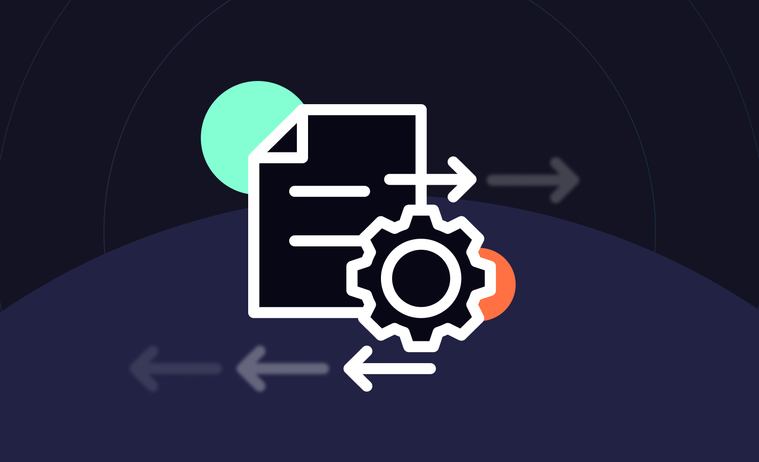Top 8 Data Replication Strategies to Try in 2024
With data streaming in from multiple departments and platforms, business leaders need a data replication plan to compile the necessary information and make timely strategic decisions. However, critical inputs can be siloed within channel-specific systems and reports, severely limiting visibility, which would be solved with an integrated platform like Peaka.
Data replication platforms solve this widespread visibility challenge by automatically transferring relevant information from separate sources into unified views for comparison, monitoring, and strategic planning. We’ve identified the top 10 data replication strategies that companies can leverage in 2024 to more efficiently share data insights across teams.
Why Data Replication Matters
A recent report found that 57 percent of businesses struggle with slow or inaccessible data, but by identifying the possibilities in 2024, decision-makers can confidently utilize platforms that eliminate manual reporting burdens through a reliable, scalable data solution. You can now unlock cross-channel data by learning about consolidation, warehousing, pipeline automation, and more. You can also ensure analytics and activities align with your overarching business objectives, powered by centralized, up-to-date intelligence.
Key Benefits of Data Replication
Increased data reliability
Automatically copying data to secondary systems creates reliable backups, protecting companies from data loss and ensuring business continuity if issues emerge.
Enhanced analytics
Combining data from separate sources provides a 360-degree view of company performance and customer behavior that exposes insights unavailable in departmental silos.
Improved productivity
Teams spend less time tracking down reports, manually compiling data, or worrying about version control.
Find out how to query data directly from its source, in real-time with Peaka.
The Top 8 Data Replication Strategies of 2024
Here are 8 replication approaches modern companies rely on to seamlessly unify data across warehouses, business intelligence tools, and other systems to create strategic alignment.
1. Change Data Capture (CDC)
Change data capture (CDC) automatically tracks and replicates any database alterations as they occur in real-time, giving analysts access to the most current, up-to-the-minute information for decision-making rather than stale report snapshots. CDC replication works seamlessly across transactional databases like PostgreSQL, MySQL, SQL Server, and Oracle.
2. Log-based incremental replication
Various databases provide the functionality to preserve transaction logs for several purposes, including simplifying the recovery process after an unforeseen event. Moreover, when utilizing log-based incremental replication, replication software can examine these logs to pinpoint modifications made to the data source. Subsequently, it replicates these alterations in the target database or data store. Such modifications may include operations like INSERT, UPDATE, or DELETE within the original database.
3. Key-based incremental replication
Key-based incremental replication operates by utilizing a specific column within your database table, known as the replication key, to facilitate data copying. This key can take various forms, such as an integer, timestamp, float, or ID.
This method, termed key-based incremental replication, ensures that only the data alterations occurring after the previous replication process are transferred to the replica. The process involves your replication software recording the highest value found in the replication key column after each job. For subsequent replications, the tool contrasts this recorded peak value against the current highest value in the same column of the source database. If the recorded value is less than or equal to the new maximum from the source, it proceeds to replicate the updated data. After successful replication, the new maximum value from the source is saved for future reference.
4. Snapshot replication
Snapshot replication stands out as the most frequently utilized strategy for data replication, renowned for its ease of implementation. This method captures a momentary image of the source data and duplicates this exact state across the replicas at the snapshot's timestamp.
Given its nature as a mere snapshot, this strategy does not monitor subsequent modifications within the source database. This includes deletions; data removed from the source prior to the snapshot will not appear in the replicated version. Essentially, it mirrors the source in its current state at the snapshot moment, excluding any records that have been deleted.
5. Full table replication
In contrast to incremental data replication approaches that rely on log changes and updates to the maximum value of the replication key, full table replication encompasses the complete duplication of the database. This method involves transferring all data, including new, existing, and modified rows, from the source to the target. It operates independently of any alterations in the source data, ensuring that everything is replicated regardless of whether changes have occurred.
6. Merge replication
Merge replication is a method that integrates two or more databases into a single unit, ensuring that changes in a primary database are also applied to secondary databases. This characteristic sets merge replication apart from other data replication techniques. It allows a secondary database to collect updates from the primary database, apply these changes while offline, and later synchronize with the primary and other secondary databases once connectivity is restored.
Within the framework of merge replication, both primary and secondary databases are authorized to modify the data. This feature is particularly advantageous when one database becomes unavailable, permitting the remaining databases to continue functioning and later synchronizing the offline database once it is back online.
To manage potential data inconsistencies resulting from updates in secondary databases, merge replication provides mechanisms to establish rules for conflict resolution.
Initiating merge replication similarly involves capturing a snapshot of the primary database, which forms the basis for data replication across destination databases. Thus, the process begins with the activation of the Snapshot Agent, laying the groundwork for subsequent replication activities.
7. Transactional replication
Transactional replication involves initially replicating all the data from the source, known as the publisher, to the destination, referred to as the subscriber. Following this initial replication, any alterations made to the publisher are mirrored onto the subscriber with minimal delay, preserving the sequence of changes.
Creating a snapshot of the publisher is crucial because it ensures that the subscribers start with an identical dataset and database structure as the publisher, which is essential for the consistency of subsequent updates. After establishing this baseline, the distribution agent then sets the frequency of updates that are pushed to the subscriber.
8. Bidirectional replication
Bidirectional replication stands as a relatively unique approach within the realm of data replication strategies. Functioning as a specialized variant of transactional replication, this method enables two databases to exchange updates between them. Similar to merge replication, it allows for alterations to be made in both databases involved. Nonetheless, a distinctive requirement of bidirectional replication is that both databases must be operational for any transaction to be executed successfully.
How to Find the Best Data Replication Strategy for You
Determining which approaches serve you best depends on use cases and stack complexity. Peaka’s analytics software combines top methods like change data capture, consolidation, transformation, and warehousing matched to your needs for unified insights.
Peaka’s dedicated service teams provide tailored guidance, identifying ideal integrations between your martech, financial data sources, support, and other mission-critical systems to un-silo insights and power data-driven planning.
The Bottom Line
Say goodbye to manually assembling diluted, delayed reports that fail to connect the dots between channel activities. The future of streamlined replication is here. Evolve your analytics maturity and realize game-changing visibility through automation. Pursue platforms purpose-built to help translate enterprise-wide data into coherent intelligence that cascades company-wide into informed choices carrying bottom-line impact.
Partner with Peaka to meet your data analytics needs with its state-of-the-art zero-ETL approach, offering hassle-free data replication without having to copy or move your data.
See Peaka’s growing library of custom integrations.




 Please
fill out this field
Please
fill out this field









